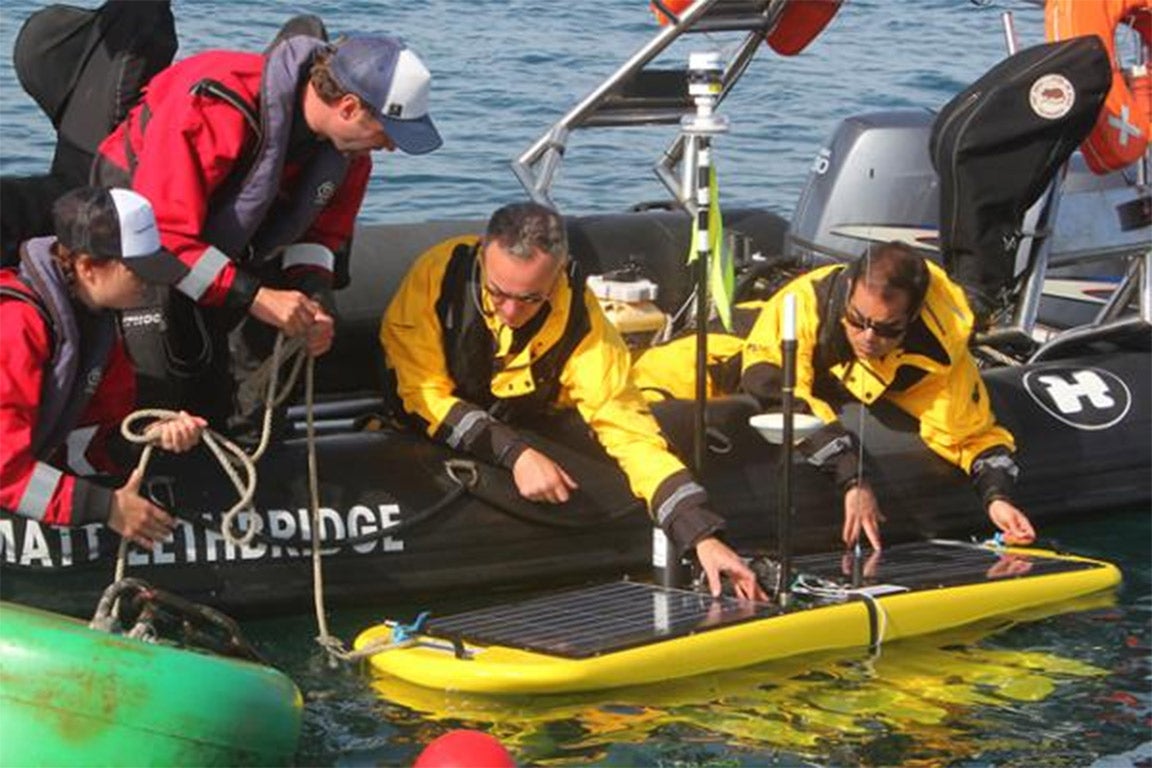New underwater robots set to revolutionise marine science
National Oceanography Centre launches ambitious new project

A fleet of seven aquatic robots has been launched into the ocean off the south west of England, ushering in a new era of marine research carried out by unmanned vehicles.
The project, led by marine researchers at the National Oceanography Centre (NOC) in Southampton, is the most ambitious of its kind in Europe. The selection of crafts will travel 300 miles over 20 days, collecting scientific data and mapping the distribution of marine life as they go.
Among the satellite-controlled vessels are battery-powered submarine gliders and surface vehicles powered by wind, wave and solar energy. Animals they are expected to encounter include fish, seabirds, dolphins and basking sharks.
The NOC’s Dr Russell Wynn, the project’s scientific coordinator, said nothing on such a scale had ever been attempted before. “One advantage of using robotic vehicles is that they are relatively small and quiet compared to research ships, so they are ideal for making observations of marine life,” he said. “They will literally be our eyes and ears in the sea.”
The exercise is a difficult logistical challenge, as each vehicle travels at a different speed and depth, with its own range of sensors, and needs its own pilot to keep watch on its position and activity. A number of commercial companies, Government agencies, the Met Office and the Royal Navy are all involved.
Most of the craft are being deployed from the Isles of Scilly – but the exact route of their journey is being kept secret to eliminate the danger of robot spotters interfering with the experiment.
The NOC’s Dr Maaten Furlong, who is responsible for managing many of the vehicles, said the long-term aim of the project was to allow scientists to “routinely deploy fleets of robots to tackle ocean research problems”.
Join our commenting forum
Join thought-provoking conversations, follow other Independent readers and see their replies
Comments